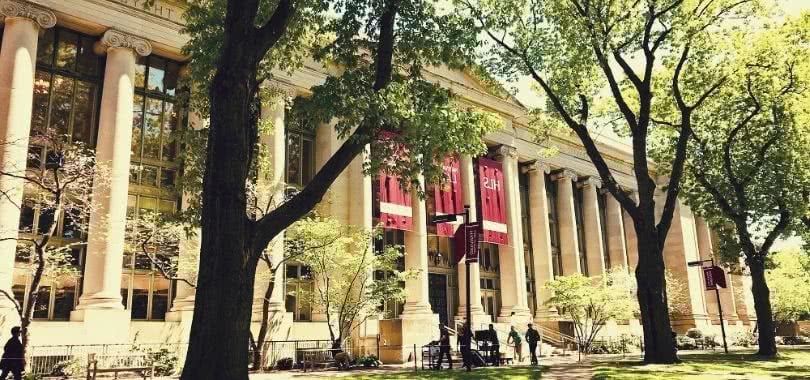Many students dream of receiving a full-ride scholarship in order to pay for their college education. In essence, a full-ride scholarship is an award that fully pays for a student’s time at college—including tuition, room and board, other fees, books and materials, and sometimes even living expenses and study abroad costs.
A full-ride scholarship seems almost like an elusive Golden Ticket—with it paying for college you’d be able to avoid taking out student loans, or parents paying out of pocket or spending time and effort applying for other financial aid opportunities. It’s an ideal solution, right?

Very few students earn a full-ride college scholarship.
Well, yes and no. For students fortunate enough to earn a full-ride, it can be a wonderful opportunity. However, fewer than 20,000 students a year earn a full-ride scholarship. This may seem like a lot, until you realize that about 20.5 million students are enrolled in college as of 2016. Therefore, about 0.1% of students earn a full-ride scholarship per year. Hmm.
Full-ride scholarships are highly, highly competitive since they are so coveted. They can be offered by the government, by the schools themselves, or by private sources (which are quite rare–only about 250 total).
Should you apply for a full-ride scholarship then?
So, should you apply? Sure—but don’t stake your college financial plan on it.
If you were banking on a full-ride, don’t worry just yet. There are many ways to make college much more affordable that don’t rely on being in that 0.1% of lucky students.
First off, let’s talk about other scholarship opportunities.
Which Scholarships Should I Apply For?
It’s not always clear what scholarships are out there, that’s why research is a must. Scholarship databases can be a huge help here, as they will help to point you in the right direction based on your studies, grades, interests, personal life, hobbies, and more.
When searching databases, make sure you complete your entire profile. There may be scholarships you miss if you skip this step. And you might be surprised at the options – there’s a lot of awards and grants out there available for the taking.
Other options include talking to your high school guidance counselor, a local library or the school’s librarian, teachers, and your future, potential college.
Also, remember that since full-ride scholarships are so rare, you may want to broaden your horizons a little bit. Many students don’t apply for those “weird” scholarships (like based off hair color or ability to duck call) and the money adds up if you win a few awards. You have a good chance of winning these if you just take the time to apply.
How To Increase My Chances of Winning a Scholarship
There are a number of ways to increase your odds of winning a scholarship—both full-ride and regular.
Research
There are a few different ways you can increase your chances of winning a scholarship, and it all starts with research. Once you have a scholarship in hand that you think you have a good chance of winning, look up everything you can about it. How and why did past students win? How many students applied? What is the best approach for this scholarship?
Take Your Time
You never want to rush a college scholarship application. Instead, take your time to meet all the criteria and make sure you’re putting your best foot forward. You want to stand out among the crowd and that isn’t going to work if you’re handing something in the night before.
Get started as early as possible and seriously dedicate time to awards, especially if the scholarship has a larger monetary amount than usual. Many students will be applying to it, so your entry has to seriously make an impression.
Ask for Help
Whether asking a parent or a teacher for assistance, it’s a good idea to get help with your scholarship entry. Have someone you trust read over your work, offer advice and guidance, and correct any errors you may have in the essay.
Guidance counselors can also be a great resource for this as they’re used to helping students navigate the financial side of college, including scholarships.
First off, you should know the difference between sticker price and net price. The sticker price is the published cost of college, the price-tag if you will. This is the number that often intimidates people, and makes them worry about being able to afford college. For example, the sticker price of Stanford is over $65,000 (including tuition, room and board, books, travel expenses, etc.). That number will cause many students and parents to strike Stanford off of their application list—but don’t do it just yet!
What’s Net Price?
Stepping back from scholarships for a second, let’s talk net price. The net price is what you actually pay for a college. It is usually a lot less than the sticker price. The net price takes into account the scholarships and financial aid a student will receive and lowers the sticker price accordingly. This is the number you should look at while comparing colleges and making a financial plan.
College Raptor’s net price calculator will help you find your personalized net price for nearly every single college in the country—for FREE! That’s right, enter your information in one time and you can see your college price estimates, potential financial aid opportunities, and more. The more you fill in, the more accurate your net price estimate will be. You will be amazed at the difference looking at the net price can make. Oftentimes private colleges are actually more affordable than in-state colleges! Use College Raptor to make more informed decisions about colleges and financial planning.
Now let’s circle back around to scholarships. Did you know that most scholarship award money is actually given out by the federal government and the schools themselves? File the FAFSA to discover federal opportunities, and check-in with the financial aid offices of the schools you’re interested in to find aid there—of course, College Raptor can give you a sneak peek as to what potential aid you can find at both!
Use College Raptor to discover more information about college scholarship programs for free!
| Lender | Rates (APR) | Eligibility | |
|---|---|---|---|
 |
5.50%-16.12%* Variable
3.99%-15.61%* Fixed
|
Undergraduate and Graduate
|
VISIT CITIZENS |
 |
5.54% - 15.70% Variable
3.99% - 15.49% Fixed
|
Undergraduate and Graduate
|
VISIT SALLIE MAE |
 |
4.63% - 17.99% Variable
3.49% - 17.99% Fixed
|
Undergraduate and Graduate
|
VISIT CREDIBLE |
 |
6.00% - 13.75% Variable
3.99% - 13.75% Fixed
|
Undergraduate and Graduate
|
VISIT LENDKEY |
 |
5.66% - 14.72% Variable
3.69% - 14.56% Fixed
|
Undergraduate and Graduate
|
VISIT ASCENT |
 |
3.70% - 8.75% Fixed
|
Undergraduate and Graduate
|
VISIT ISL |
 |
5.62% - 16.85% Variable
3.69% - 16.49% Fixed
|
Undergraduate and Graduate
|
VISIT EARNEST |
 |
5.00% - 14.22% Variable
3.69% - 14.22% Fixed
|
Undergraduate and Graduate
|
VISIT ELFI |





